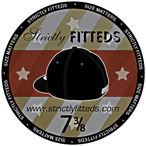By JENNIFER CAROFANO*
Going green is becoming an increasingly important part of doing business. From production to promotion, here are seven examples of how shoe companies are making a difference for the environment.
Keen: Taking a Stand
Keen is putting sustainability front and center. This August, the Portland, Ore.-based company will launch its latest environmental initiative, Hybrid.Stand. “There is so much in the media right now about sustainability,” said Bobbie Parisi, VP of marketing at Keen. “However, many people are overwhelmed. They want to contribute, but they aren’t sure how or where to start to make a difference.”
Hybrid.Stand aims to get everyday people involved in the issue of sustainability. Individuals are encouraged to submit their ideas for sustainable living around three themes: Stand Up, those who communicate sustainability; Stand Out, those who act in a sustainable way in their environment; and Stand For, those who care for people and the environment. In each category, the grand prize winner will receive $25,000, and five additional winners will receive $5,000 each. Winners will be announced at a festival on June 21, 2008.
To get the word out, Keen will be showing a film, featuring 10 people already making a difference for the environment, at 50 college campuses across the country. The film will also be shown at the global Live Earth event, a concert series being held on July 7 in seven continents to bring awareness to the climate crisis, including global warming. “We want to give people an opportunity and incentive to get involved and be part of the solution,” said Parisi.
Nike: Product Push
Ever the pioneer, Nike began exploring the possibilities of eco-friendly footwear back in spring ’05 with the launch of its Considered collection. “We started by taking out components, but we are now looking at a holistic approach,” said John Hoke, VP of footwear creative design at the Beaverton, Ore.-based firm. “We have had tremendous learning from the Considered journey.”
The company recently pledged to apply the same environmentally conscious ethos across its entire footwear business with the ambitious goal of reducing waste in product design and packaging, eliminating volatile organic compounds and increasing its use of eco-friendly materials by the year 2011. In addition to the Considered collection, new eco-friendly products will roll out first in the outdoor-specific ACG brand as well as within Nike’s basketball and running categories. For example, the Air Zoom Affinity (below left), set to debut for spring ’08, was produced with 38 percent less waste and 40 percent less solvents and uses 33 percent recycled materials.
“We are trying to eliminate and reduce waste as much as we can,” Hoke said. “That’s our biggest push.” The design ethos will ultimately affect more than 225 million pairs of shoes each year. The company also plans to meet the same requirements for apparel and equipment production by 2015 and 2020, respectively.
Mion: On the Lot
For Mion, the big screen is playing a key role in helping to bring awareness to the environmental cause. The brand, a division of Stratham, N.H.-based Timberland, will announce the winners of its second annual Mion Solutions Environmental Film awards this August.
“Film is a very creative form of communication that can not only inspire, but ... has the ability to resonate on a higher level than many other media,” said Erik Burbank, GM for Mion Footwear, who noted that this year’s competition saw an uptick in the number of entries from the previous year. The first-place winner will receive $1,500 to help fund future environmental films, as well as $1,500 to donate to an environmental cause of their choice. Second- and third-place winners will receive $1,000 and $500, respectively, to use and donate. (Last year’s winning films featured topics as varied as sustainable farming in Ohio, river cleanup in Washington, D.C., and water conservation and protection in China.)
In addition, this year’s winning films will be screened across the country at select Mion retailers. “By partnering with our retailers ... on film nights, we are able to help the filmmakers raise awareness of the issues their films address at a grassroots level,” said Burbank. “We believe that such outreach can and will inspire environmental activism and stewardship.”
Sole Technology: From the Top
Sole Technology wants to impact the environment — from the top down. In addition to installing solar panels on the roof of its Lake Forest, Calif.-based headquarters (above), the company is the first in the action-sports industry to appoint an environmental executive. Named manager of environmental affairs in February, Roian Atwood (above, at right), previously the director of sustainability at American Apparel, is currently overseeing a full ecological survey of the company.
“The first and primary goal is to do a complete analysis of exactly ... what our impact is on the world,” said Atwood, who added that while a standard analysis can take 18 months, he is on track to complete the Sole Technology analysis in six months’ time to meet a June 29 deadline.
Atwood has designed a customized plan for the company that will measure five distinct environmental concerns — carbon emission and other greenhouse gases; total water usage; total materials consumption, including those materials used in footwear as well as in the company’s buildings and vehicles; built environment displacement, or how a building has affected the natural environment where it was constructed; and cumulative toxicity — from shoe production to the environmental effects of a typical office desk.
“At the end of [the analysis], I will have a quantifiable number in each of those categories that represents our metric system,” said Atwood. “For example, how many pounds of carbon dioxide did we emit in 2006, and what are we going to do in the future to minimize that?”
One idea is to create a “green” rooftop on the company’s Fontana, Calif.-based distribution center that would offset both carbon emissions and built environment displacement with a mix of vegetation, solar panels and wind machines. “This is one of the most exciting times in human history, because we are being called to a challenge,” said Atwood. “[The environment] is something humanity can really turn around and, ultimately, determine our own future.”
Earth: Green Donation
Earth is giving back — and gaining a loyal following in the process.
Since 2006, the Waltham, Mass.-based firm has partnered with Earth Share, a network of nonprofit environmental organizations including the Nature Conservancy, the Sierra Club Foundation and the Surfrider Foundation, which facilitate environmental education and charitable giving through workplace-giving campaigns. For every Earth shoe purchased and registered at Earth.us/showyoucare.asp, the company donates $5 to Earth Share for a maximum donation of $25,000 each year. According to Dave Aznavorian, VP of marketing for Earth, close to 1,000 individuals have signed up since the program’s inception. (The company donates the full $25,000 each year, regardless of how many people register product online.)
“It’s less of a loyalty program and more of [a means] to [show] the way we operate to the consumer,” said Aznavorian, who noted that the most popular product registered is the brand’s animal- and eco-friendly vegan collection (at left). “It’s a different way to create a relationship with your consumer.”
Going forward, the company hopes to invite its registered consumers to participate in company-wide environmental events. “When your brand is [called] Earth,” said Aznavorian, “there is an expectation and responsibility that comes along with that.”
Timberland: Label This
Timberland believes in full disclosure. For fall ’06, the Stratham, N.H.-based company debuted nutritional labels on its footwear boxes that show consumers the environmental footprint of the company. This spring, Timberland took the process one step further with the Green Index (above, at right). The new ratings system shows consumers exactly how the production of the style they purchase has affected the environment. The labels indicate climate impact, chemical use and resource consumption on a scale of 1 to 10, with zero indicating the lowest environmental impact.
“We believe consumers should hold companies accountable for the way they conduct business,” said Betsy Blaisdell, manager of environmental stewardship for Timberland. “Our Green Index provides consumers with visibility into the environmental footprint our business creates. This also creates more transparency and allows consumers to see the design metrics we are working on to improve all product.”
The ratings system will be visible on hangtags and on the company’s Website, and an overall score will be stamped inside select shoe styles. This spring, five styles within the brand’s Outdoor Performance category feature the Green Index, and that number will grow to 30 styles for fall ’07. Going forward, Timberland plans to provide a Green Index for every style bearing the Timberland name, as well as for the company’s Mion and Golite brands. “The public nature of this initiative creates tremendous incentives for us to design product with fewer impacts, and ultimately, this results in better choices for the increasingly informed consumer,” Blaisdell said.
Simple: Warming Trend
Simple is drumming up awareness about harmful climate change by partnering with Stopglobalwarming.org. Founded by Robert F. Kennedy Jr., Laurie David and John McCain, Stopglobalwarming.org is an online community (so far, more than 800,000 people have signed on) offering individuals information on global warming and how they can affect change — both locally and globally.
“We’re partnering with Stopglobalwarming.org because of our shared vision,” said Greg Nielsen, marketing manager for Simple, a division of Goleta, Calif.-based Deckers. “They’re giving a voice to the most prominent environmental issue to date: global warming.”
Last month, Simple debuted a flip-flop in collaboration with Stopglobalwarming.org that features eco tips on the shoe itself, such as “Stop idling. After 10 seconds, you’ll waste 10 percent less by turning the ignition off.” A second thong style hits the market next month, followed by a Stopglobalwarming.org eco sneaker [below] for spring ’08. The casual kicks feature hemp uppers and recycled materials in the sole, footbed and laces. A portion of all proceeds from the styles will benefit Stopglobalwarming.org. “Our goal is to raise $500,000,” Nielsen said.
*footwear news



















No comments:
Post a Comment